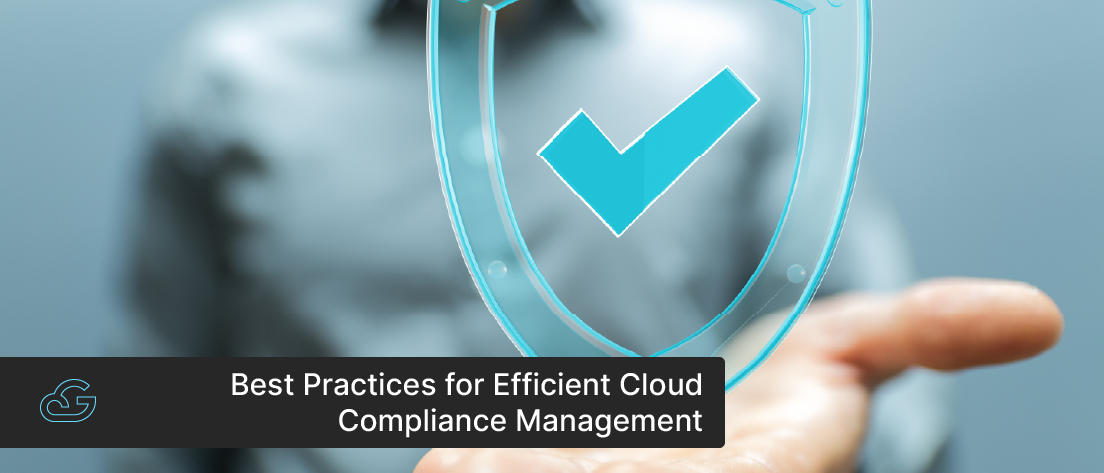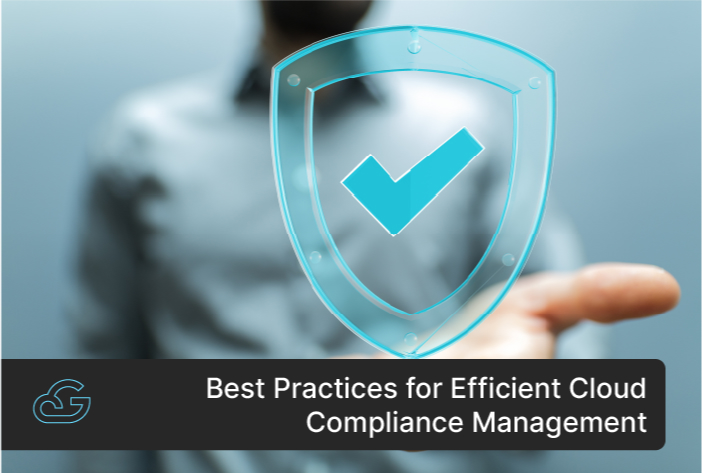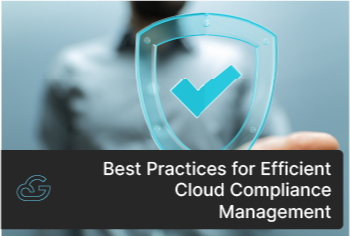Blogs / Security and Compliances
Best Practices For Efficient Cloud Compliance Management
By
Sibin Vincent [Chief Cloud Officer]
Posted: December 08, 2019
• 4 Min Read
Whether your organization is new to the cloud or already has a presence in it, compliance with cloud regulations and standards is critical to safeguard your operations. Failing to comply with these regulations could result in costly security vulnerabilities and data breaches, potentially causing legal and financial repercussions. Therefore, it is essential to understand the importance of cloud compliance and its consequences. Has your organization recognized this criticality? Have you taken steps to comply with necessary cloud compliance standards?
Let’s discuss the significance of cloud compliance, the key regulations and standards, and best practices.
What is Cloud Compliance?
Cloud compliance management is the process of ensuring that an organization's cloud-based infrastructure, applications, and services comply with various regulations, industry standards, and internal policies. Efficient cloud compliance management is essential for businesses that rely on cloud computing to store sensitive data and conduct essential operations.
Why cloud compliance is important?
Implementing compliance best practices is crucial in cloud computing to ensure that your organization complies with the legal, regulatory, and industry-specific requirements for protecting data privacy, security, and integrity. This helps you to avoid legal and financial penalties and reputation damage while building trust and confidence with your customers and partners.
As your customers become more concerned about the security and privacy of their data, they are more likely to do business only if they find that your organization is capable to demonstrate your commitment to protecting their sensitive data. By adhering to cloud regulations and standards, you can assure customers that their data is secure and that you are taking the necessary steps to protect it.
Common Cloud Compliance Regulations
Compliance best practices provide guidelines for securing sensitive data, including personal information, financial records, and confidential business data, and help organizations mitigate the risks associated with cloud computing. Compliance regulations vary depending on the industry and location, but having an understanding of some common compliance regulations is essential to ensure cloud security.
Popular Cloud Compliance Regulations
| Definitions | Applicable Industries | Functions |
|---|---|---|
| GDPR - General Data Protection Regulation | Organizations that process personal data of individuals within the European Union (EU). | Imposes strict requirements on how personal data is collected, processed, and stored. |
| HIPAA- Health Insurance Portability and Accountability Act | Organizations that handle Protected Health Information (PHI) in the United States. | Sets standards for the confidentiality, integrity, and availability of PHI. |
| PCI DSS- Payment Card Industry Data Security Standard | Organizations that process credit card transactions. | A unified application performance management platform Sets requirements for the secure handling of credit card information to prevent fraud and data breaches. architectures. |
| FedRAMP - Federal Risk and Authorization Management Program | Cloud service providers that provide services to the federal government of the United States. | Sets standards for the security of cloud services to ensure that they meet the government's requirements. |
| SOC 2 - Service Organization Control Type 2 | An auditing standard developed by the American Institute of Certified Public Accountants (AICPA). | Evaluates the security, availability, processing integrity, confidentiality, and privacy of cloud service providers. |
As information security and user privacy become increasingly important, cloud compliance regulations are constantly evolving and being updated, making it challenging for organizations to keep up with the latest requirements.
However, a reputed cloud service provider can offer efficient practices and guidance to help your organization achieve compliance in the cloud, saving time and resources and reducing the risk of non-compliance penalties. Let’s learn how.
Best Practices For Cloud Compliance
Understand Your Compliance Requirements
Different industries and regions have different regulations and standards that organizations must comply with. You need to understand the requirements that apply to your organization and ensure that the infrastructure and services comply with them. This involves performing a risk assessment, identifying the data that needs to be protected, and evaluating the security controls that are required to protect that data. This process may require the assistance of external consultants and experts, which can be costly, but the consequences of non-compliance can be even more expensive.
Regular Compliance Audits
Regular monitoring and auditing of your cloud environment are critical for efficient cloud compliance management. This involves setting up monitoring tools to detect security events, such as unauthorized access attempts and data breaches. Additionally, you need to regularly review logs and audit trails to identify security incidents and compliance violations.
Manage Data Access and Controls
To maintain compliance with cloud security standards, you must monitor how your data is accessed and controlled in the cloud, and be vigilant for any potential identity or access control violations or abnormal activities. To adhere to the principle of least privilege access, it is recommended to limit users' access to only the information and resources that are strictly necessary for their job functions and to ensure that access is granted on a need-to-know basis.
Choose the Right Cloud Service Provider
Look for cloud providers that have a strong track record of compliance with relevant industry standards and regulations, such as ISO 27001, SOC 2, or HIPAA, depending on your organization's needs. Additionally, consider the provider's security controls and practices, such as encryption, access controls, and incident response plans. You should also review the provider's service level agreements (SLAs) and ensure that they meet your organization's requirements for availability, uptime, and data recovery.
Know Your Responsibilities
When you rely on cloud services to store, process, and manage your data, keep in mind that you are ultimately responsible for keeping the customer’s information safe, not the cloud service provider. Cloud service providers typically offer a shared responsibility model, where they are responsible for the security of the cloud infrastructure, such as the physical security of data centers, network security, and host operating system security. However, the responsibility for protecting the data itself, including data access, identity management, and encryption, lies with the organization that owns the data. Hence you should take the necessary measures to ensure compliance from your end.
Train Your Team
Your employees need to understand the compliance requirements that apply to their roles and responsibilities. Provide them with regular training and awareness programs about cloud compliance management best practices and management, making the aware of the necessary security protocols and risks associated with non-compliance.
Final Words
Whether you operate in a cloud-native, multi-cloud, or hybrid cloud model, having a well-defined cloud security strategy helps ensure compliance across your entire infrastructure, from asset cataloging to threat response.
Moreover, it's important to work with legal and compliance experts to determine which regulations apply to your organization and to ensure that you are fully compliant. If you need any additional guidance, do not hesitate to contact us.


Get Know More About Our Services and Products
Reach to us if you have any queries on any of our products or Services.











